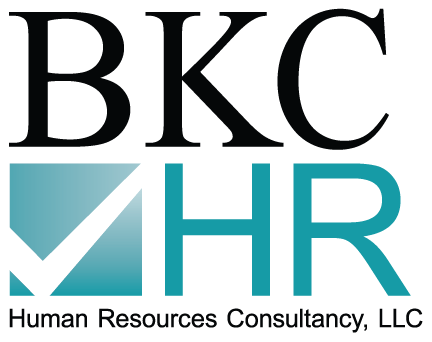 Ask most business owners what software they use to run their business, and the answer will be QuickBooks. QuickBooks also has an edition of their highly popular software which is tailored specifically for Not-for-Profit Organizations. That edition is the QuickBooks Premier Not-for-Profit Edition. The software is available in both the desktop version and the online version. With QuickBooks being the most popular software, it is no wonder that many 3rd party software applications are available to collaborate with QuickBooks to extend the capacity of the QuickBooks software.
Ask most business owners what software they use to run their business, and the answer will be QuickBooks. QuickBooks also has an edition of their highly popular software which is tailored specifically for Not-for-Profit Organizations. That edition is the QuickBooks Premier Not-for-Profit Edition. The software is available in both the desktop version and the online version. With QuickBooks being the most popular software, it is no wonder that many 3rd party software applications are available to collaborate with QuickBooks to extend the capacity of the QuickBooks software.
QuickBooks offers a wide range of reports that are available to help both management and the Board of Directors to monitor the operations of the Organization. In addition to the traditional balance sheet and statement of revenues and expenditures, donor grant reports, budget vs. actual, and statement of functional expenses can be produced. For Organizations that receive donations from the general public, thank you acknowledgement letters can also be generated from the software.
Reviewing the financial reports for the Organization is an important duty of the Board Members; it is also their responsibility to make sure that effective systems of internal controls are in place. Several 3rd party software applications are available that allow Directors responsible for approving expenditures to login remotely, view a copy of the invoice and either approve or reject payment.
Here are some best practices that should be considered in configuring your QuickBooks file:
- Create your Chart of Accounts to match the amounts that you report on Form 990. A separate account should be set-up to correspond to each line item on Form 990 of Parts VII (Statement of Revenues), IX (Statement of Functional Expenses) and X (Balance Sheet). The Chart of accounts should relate to your particular Organization. You should not set-up accounts for line items that do not pertain to your Organization.
- Keep your accounts simple. For example, telephone expense should be set-up as the standard account. Avoid the complication of creating additional accounts for mobile devices, fax charges, etc. These can be set-up as sub-accounts that collapse and roll-up to the standard account.
- Use account numbers. The account name is what you see on your financial statements and reports. The account number is the code that works as the mapping mechanism, when importing information from your general ledger. A standard structure would be to use a 4 digit account numbering system. Asset accounts would begin with the 1000 series, liabilities with the 2000 series, net assets with the 3000 series, revenue with the 4000 series, and expenses with the 5000 series.
- Use Classes. The use of Classes in QuickBooks allows you to identify if an expenditure should be classified as a Program Expense, Management or General Expense or Fundraising Expense. Every transaction should have a Class assigned to it. This will allow for your QuickBooks software to generate the required Statement of Functional Expenses and provide more useable management reports..
- Enter your budget by Classes. Budgets should be entered first by Class. You will then have the availability to print financial reports that correspond to each line item on Form 990 of Parts VII (Statement of Revenues) and IX (Statement of Functional Expenses). This report will show each line item as a Program Expense, Management or General Expense or Fundraising Expense. You can print reports at any given time that reflect the actual operating results vs. budget for each Class. This report provides the Board of Directors with the best tool for monitoring the Organization’s finances.
- Enter your budget by Grants. Budgets should also be entered by Grant (or in QuickBooks terminology, Jobs). This report will reflect the actual revenue and expenditures as compared to the amount that been budgeted for in each Grant category. You will be able to quickly determine how much money is available to spend in order to fulfill the requirements of the Grant.
- Involve a qualified accountant. Organizations should bring in a qualified accountant that is both experienced with Not-for-Profit Organizations and QuickBooks. Proper planning and training should pay off in the ability to present accurate and useful financials to your Board of Directors and Management, as well as prospective funding sources. Your bookkeeper must have experience with Not-for-Profit Organizations and keep the financial records up to date on a regular basis.
At BKC, we have a dedicated not-for-profit team that includes full-time tax managers with in excess of 20 years experience each, a technical reviewer for financial statement compliance, and highly trained staff well versed in the non-profit world. We also have a team of QuickBooks experts that include a Certified QuickBooks ProAdvisor, with over 40 years of experience. Our knowledge, experience and training benefit our non-profit clients in many ways.
We are much more than preparers of financial statements and information returns. Over the years we have assisted our clients in developing cost allocation plans, streamlining their grant reporting process, provide necessary Board Policy and the implementation of internal control procedures to help reduce the risk of fraud. Many members of our Management Team serve on Boards of various Organizations and we encourage such involvement. We know firsthand the information that Board Members are looking for in order to carry out their fiduciary responsibility to the Organization.
Having a not-for-profit team allows us to be at the forefront of the many changes within the industry. At BKC we plan for the future today, while other firms simply react to change. If you have any questions about using QuickBooks for your Organization, please contact Edward P. Portice, CPA of Bedard, Kurowicki & Co., CPA’s, PC at (908) 782-7900 or email epp@bkc-cpa.com.
View upcoming training seminars here.




